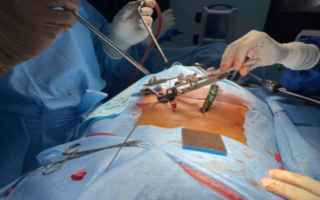Blood plasma donating plays a vital role in modern medicine, providing a critical resource for treating numerous medical conditions. Unlike whole blood donation, blood plasma donating focuses on collecting the yellowish fluid that carries blood cells, nutrients, and antibodies throughout the body. This plasma is essential for creating therapies that save lives and improve health worldwide. Understanding how blood plasma donating works, its benefits, and what to expect during the process helps potential donors feel more comfortable and motivated to contribute.
What Is Blood Plasma and Why Is Donating It Crucial?
Medical treatments that rely on plasma include therapies for immune deficiencies, clotting disorders, and trauma recovery. For instance, plasma-derived medicines help patients with hemophilia, a disorder that impairs blood clotting, preventing excessive bleeding.
The demand for plasma is constantly growing due to its wide range of uses. Blood plasma donating provides a renewable supply that cannot be synthesized artificially, making it irreplaceable in healthcare. Unlike donating whole blood, plasma can be collected more frequently because the red blood cells are returned to the donor’s body during the process. This frequency allows plasma donation centers to maintain a steady supply of this life-saving component.
The Blood Plasma Donating Procedure: What Donors Can Expect
Blood plasma donating is a specialized process called plasmapheresis. It involves drawing blood from the donor, separating the plasma from other blood components using a machine, and then returning the remaining blood back to the donor. This method ensures the donor’s red blood cells, white blood cells, and platelets are preserved, minimizing recovery time and reducing side effects.
Before the donation, donors undergo a screening to assess their health and eligibility. This screening typically includes questions about medical history, travel, and lifestyle, as well as a brief physical exam and blood test. The goal is to protect both the donor and future recipients by ensuring the plasma collected is safe and uncontaminated.
During the donation, a sterile needle is inserted into a vein, usually in the arm, to draw blood into the plasmapheresis machine. The machine separates the plasma, which is collected in a sterile bag, and then returns the remaining components through the same needle. The entire session can take around 45 minutes to an hour, depending on the donor’s weight and the amount of plasma collected.
After donating, it’s common to experience mild fatigue or dehydration, so donors are encouraged to drink plenty of fluids and rest if needed. Most people can resume normal activities quickly and return to donate again after a waiting period, often as short as 48 hours, depending on local regulations.
The Benefits and Considerations of Blood Plasma Donating
Donating plasma offers significant benefits not only for recipients but also for donors themselves. Regular blood plasma donating can stimulate the body to produce more plasma and blood components, which may support overall health. Many donors find satisfaction in contributing to a cause that directly saves lives and helps people recover from serious illnesses.
Plasma donation centers often provide compensation or incentives, which can be an additional motivator for many donors. However, it’s important to prioritize health and safety above all. Being well-hydrated and maintaining a nutritious diet before and after donating helps reduce side effects.
Certain individuals should avoid blood plasma donating, including those with specific medical conditions, recent surgeries, or infections. Pregnant women and individuals taking certain medications might also be ineligible. It is essential to disclose accurate information during the screening to protect both the donor and recipients.
Innovations Enhancing the Future of Blood Plasma Donating
Ongoing research and technological improvements continue to enhance the safety and efficiency of blood plasma donating. Innovations in plasmapheresis machines and screening tests have reduced risks and increased donor comfort. Additionally, expanded awareness campaigns encourage more people to become regular plasma donors, helping meet rising medical needs worldwide.
Scientists are also exploring ways to better utilize plasma components and develop new therapies from donated plasma. These advances promise to make plasma donation an even more critical part of healthcare in the future.



